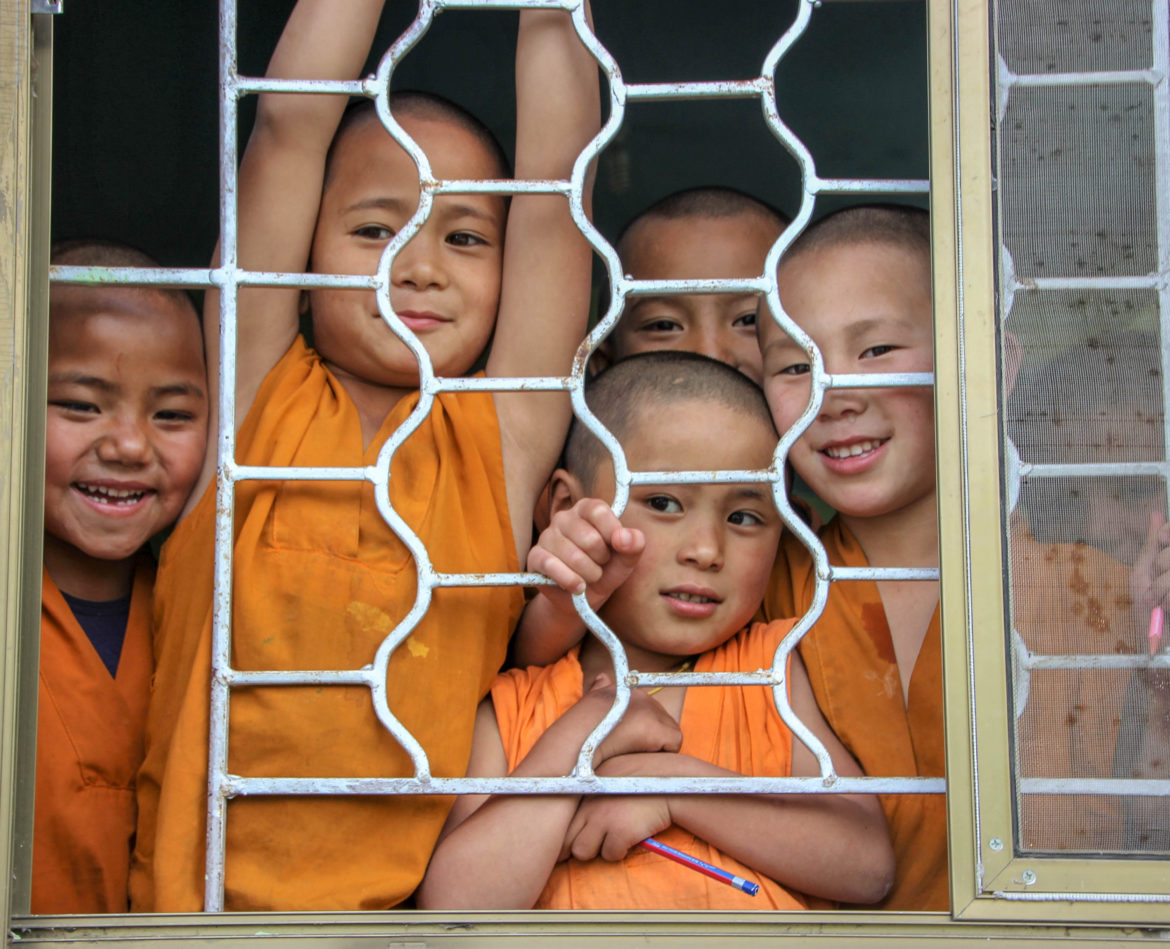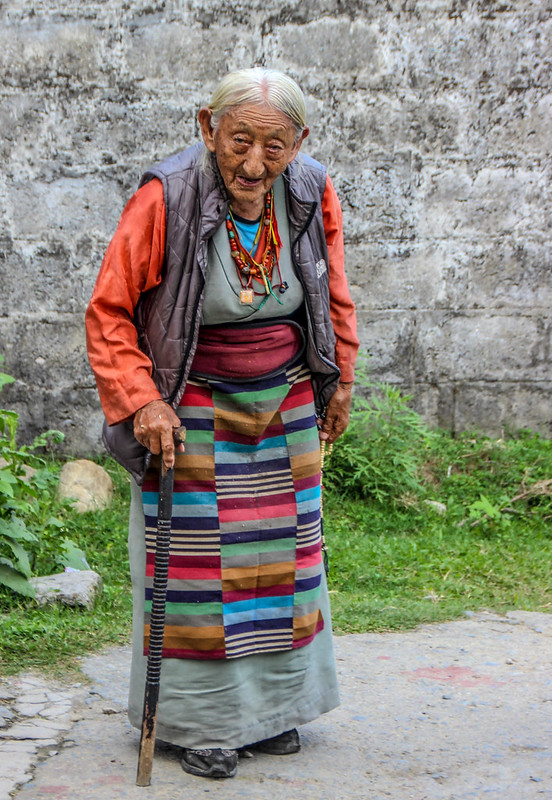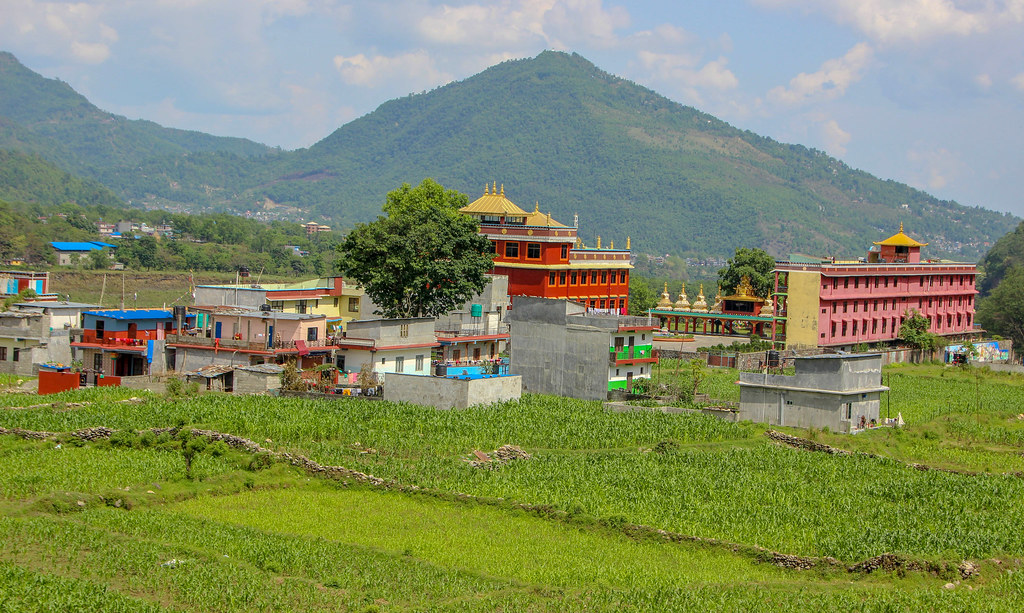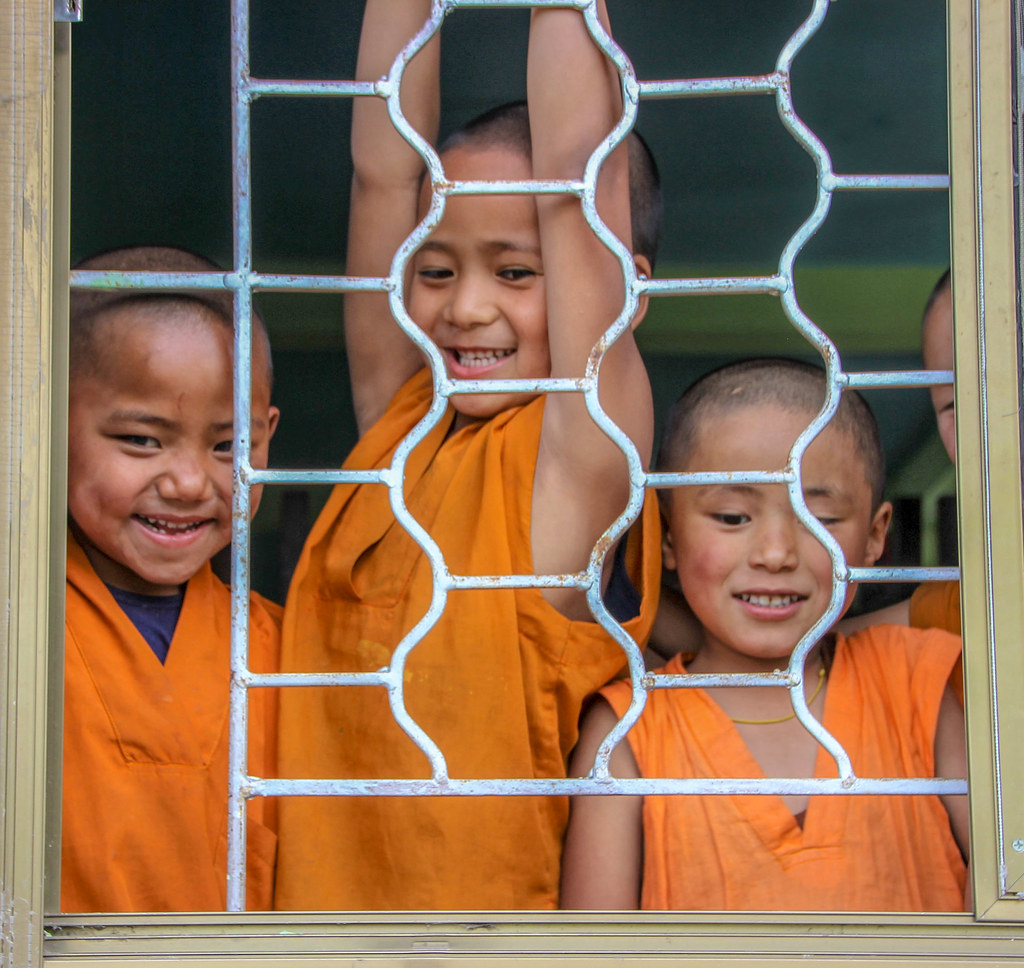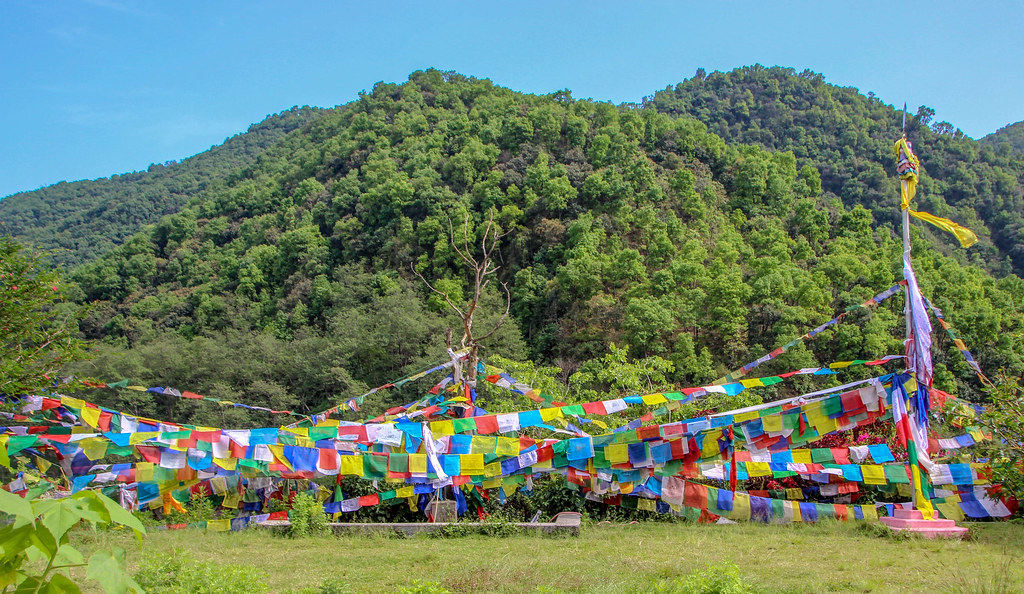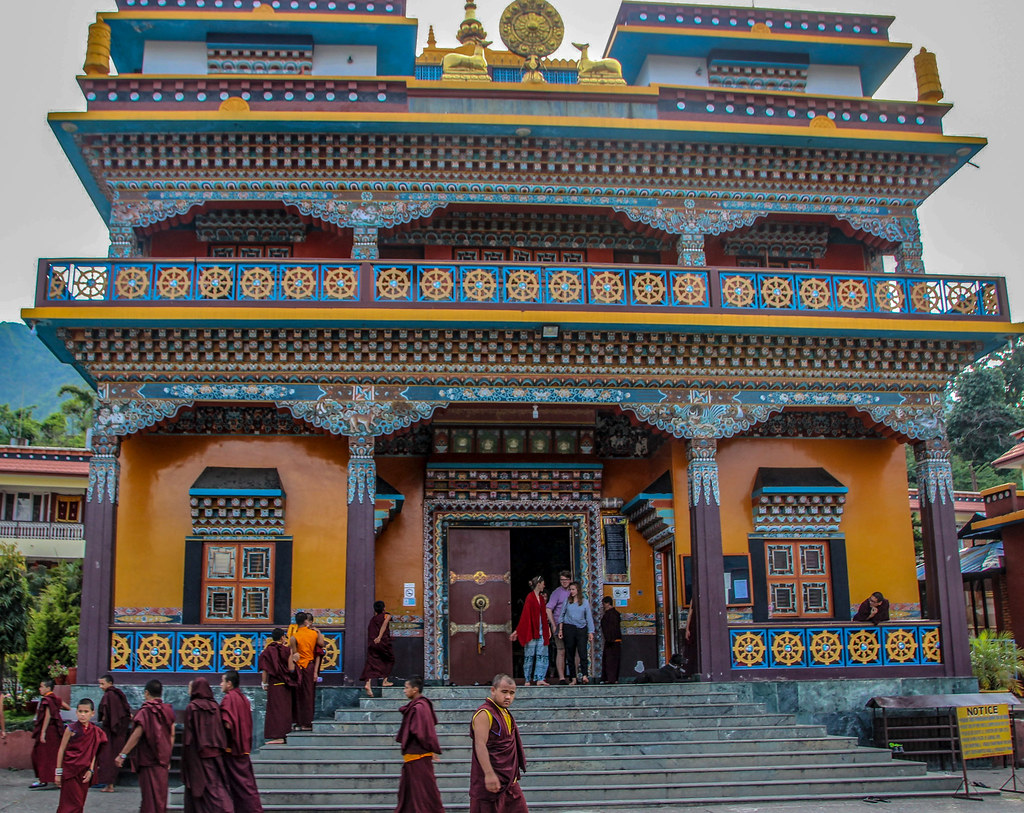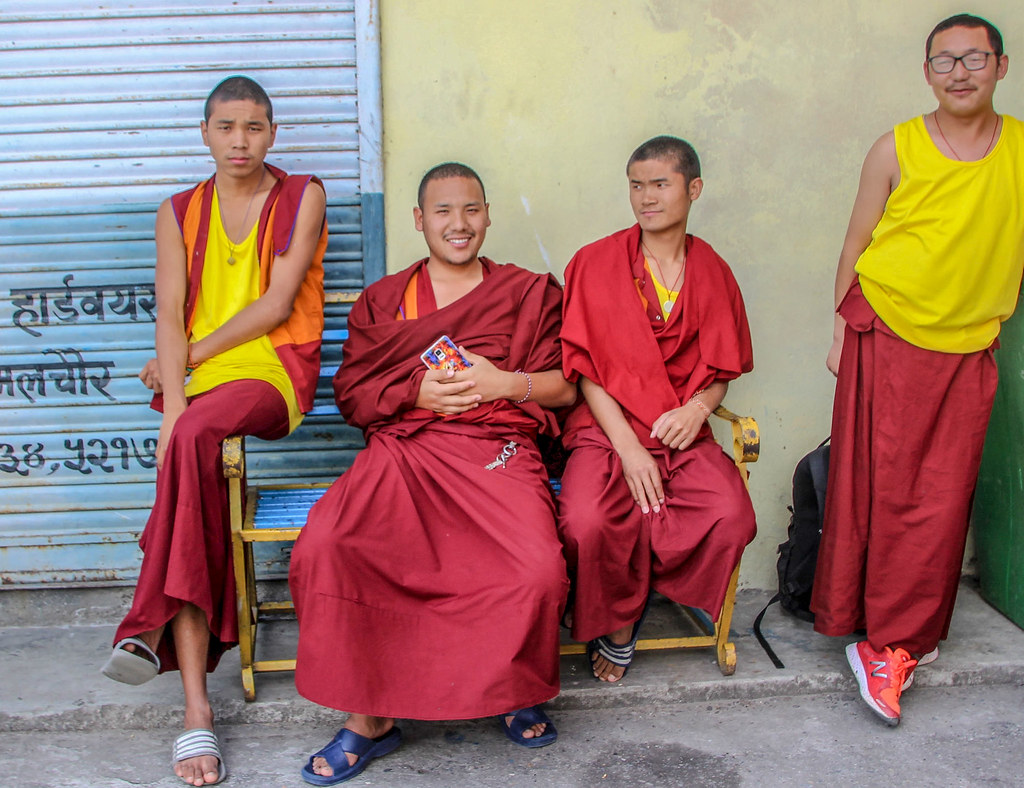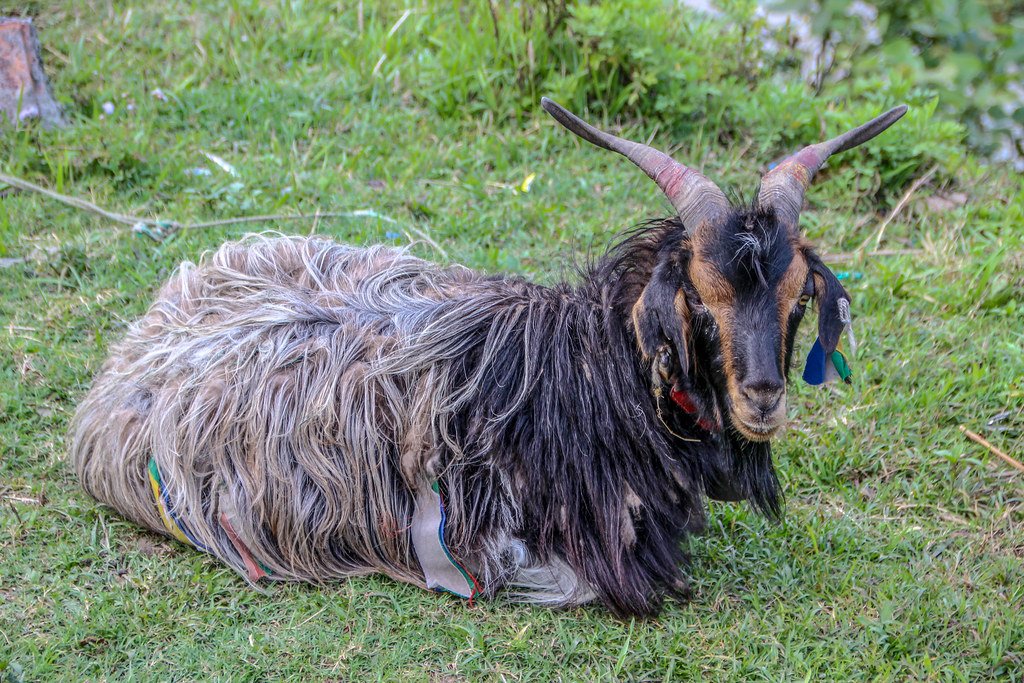In Nepal’s Pokhara Valley there are 4 Tibetan refugee settlements. They established in the 60’s during the Tibetan diaspora, fleeing the Chinese government. These settlements are open for anyone to visit and purchase their cultural handicrafts. During May, I visited the largest settlement in the Pokhara valley, Tashi Palkhel, home to about 700 residents.
In 1959, 20,000 Tibetan Refugees Settled in Nepal – Tibetan Diaspora
During the 1959 Tibetan uprising, 20,000 Tibetans settled in Nepal. In 1989, Nepal stopped permitting Tibetans to take refuge in Nepal. However, 3000 Tibetan refugees continue to flee to Nepal each year. Many live in a sort of limbo, not as a resident nor legal refugee. Thus, their rights and living standards are insecure and impoverished, as they’re unable to take jobs or governmental assistance. The only way they can make money is by selling their cultural handicrafts in the settlements and Nepalese markets.
An important tradition for the Tibetan people is rug-making, made from Tibetan highland sheep’s virgin wool. This unique rug-making process has everything done by hand. Furthermore, Tibetan rugs are big business in Nepal, from immigrants bringing their knowledge. In Nepal, the rug business is one of the largest industries in the country. As a result, there are many exporters and centers in the Tibetan refugee settlements.
My Day at Nepal’s Tibetan Refugee Settlements
My friend and I arrive without a guide or agenda, except to wander and meet the delightful Tibetan people. We discover there is a Buddhist Puja chanting ceremony from 3:30-5pm, so we plan our day around attending it. The community lies in a lush valley, nestled in between mountains, blanketed with tall cornfields. We walk by the homes, fields, markets, humble restaurants selling thukpa (noodle soup), momo’s (dumplings), Tsampa (roasted barley) and butter tea.
There is a rug-weaving center, where you can see all stages of the process and purchase finished ones. The markets fill with many Tibetan Buddhist handicrafts. My favorite are the Thangkas, a syncretic art of Chinese hanging scrolls with Nepalese and Kashmiri painting. Painted on cotton or linen, they usually depict deities, religious or astrological subjects and mandalas. They’re framed in colorful silk brocades and stored rolled up. Thangka, means “something to roll” enabling them to be rolled up for transportation.
Meeting the children as future Tibetan Buddhist Monks
After meandering to get a feel for the community, we stumble across the monastery. It’s closed to visitors this day, but the man at the gate relents after seeing our disappointment. Excitedly, we set off to explore the grounds of the Buddhist monastery and temple. Within minutes, we hear the high-pitched, Tibetan chatter of children monks waving from a window, gesturing us to greet them. I’m awestruck with an outpouring of heartfelt emotion. We attempt to communicate between the language barrier and window with these little darlings.
I extend my hand and shake their little hands, attempting to connect with the Tibetan greeting, “Tashi delek!”
About 8 boys, appearing to be 8-10 years old, are wearing orange robes giggling and playing with us through this metal-woven screen. However, there is enough space to extend out their precious hands. And then, adorably, a few start saying the magic word with an abbreviated accent: “Choclit!” Ah yes, these little rascals; this is why they want to talk with us. Feeling so bummed that I didn’t have any chocolate, my friend, pulls out her chocolate Power Bar and hands it to them. One of them anxiously grabs it and most of them retreat inside to fight over the bar. I laughingly tell them (not sure if they understood), “Now, be sure to share, as this is a spiritual virtue.”
Endearingly, 3 of them take advantage of the others’ distraction and just gaze at us in solitary peace through the window, smiling. Oh, I tell you, my heart is singing itself into a frenzy right here and now. How unbelievably cute!!! They begin to share the Power Bar, chewing quizzically as though they questioned its taste. After all a Power Bar is not chocolate in its highest form. We hesitantly, pull ourselves away and say good-bye and Namaste to our new friends. Note to self, next time bring lots of good chocolate to a monastery.
Exploring the Tibetan Buddhist Monastery – Nepal’s Tibetan Refugee Settlements
Then, we continue up steps alongside a foothill, walking past a white chorten with colorful trim (Tibetan stupa). It’s adorned by Mani stones, alongside Buddhist mantra carvings. As we reach the top of the stairs, it feels more like Tibet. There are colorful prayer flags flapping in the wind, along both sides of a Butter Lamp Offering House.
I stay away, because a monk is in there with 2 individuals, appearing to be doing an offering. Across from the house is a Buddhist temple with no one around. From outside it looks simple with a pair of white lions (Tibetan national symbol of clarity and fearlessness) statues at the bottom of the stairs. Also, there are Buddhist paintings flanking the front door.
After going up the stairs and peaking inside, we surprisingly discover the inside. It’s intricately ornate with religious regalia in golds, oranges, blues and reds. There’s a big gold Buddha in the center with mandalas, Thangkas, statues, frescoes and paintings throughout every speck of space. We aren’t sure if we’re allowed to be in here, so we breeze in and out. But we could have easily spent hours inside, almost like enjoying an art museum.
A Buddhist Puja Gathering
Next, we head for the Buddhist Puja Chanting Ceremony at the other Buddhist temple. There’s a courtyard in front of the temple, with the monks gathering outside, including a group of them playing hacky sack. Walking in the entrance welcomes us to a vivid, breathtaking scene. Plus, the interior is exquisitely ornate, with about 40 monks and large texts, murmuring among themselves.
Visitors are welcome, however, not allowed to take photos or videos. We sit on the floor along one wall, with other visitors and just take in the whole experience. Suddenly, a loud horn bellows and the monks begin to chant. In unison, they repeat tones and mantras over and over again. I don’t know what they’re chanting, however the resonance from their tones and chants was enough for me to absorb clarity and healing. This Puja is scheduled for 90 minutes; however, we just stay a half hour. Humbly, I deeply appreciated them letting us observe. This experience is a must-see for visitors.
Overall, Nepal’s Tibetan Refugee Settlements
Afterwards, we shopped in the market across from the temple for Tibetan souvenirs. This is the only income for many of the refugees living here. So it’s nice to give back by purchasing their handicrafts. My friend and I buy Tibetan Buddhist jewelry, that is handmade with good quality. Lastly, near the gate we see an adorable Tibetan goat with prayer flag extensions from his ears. I am so amused at this. His owner lets us pet him, and he remains chilled out as we fuss over this hairy guy.
Overall, I loved my day connecting with this community and feel so blessed to get a sense for this culture. It’s so deep and rich in ancient mysticism, tradition and knowledge, beyond any modern pipe dream. I pray for these people and our world, that we always preserve the rich Tibetan heritage. Then our future generations can be more rooted to the past and connected to the Tibetan humble wisdom for posterity to benefit.
Read More!
Amazing Kathmandu, Nepal Top Attractions & 7 World Heritage Sites
Life Changing Nepal Walking Tour in Agricultural Communities
Life Lessons on Nepal Teahouse Trek – Paradise, Leeches & Breaking my Arm

